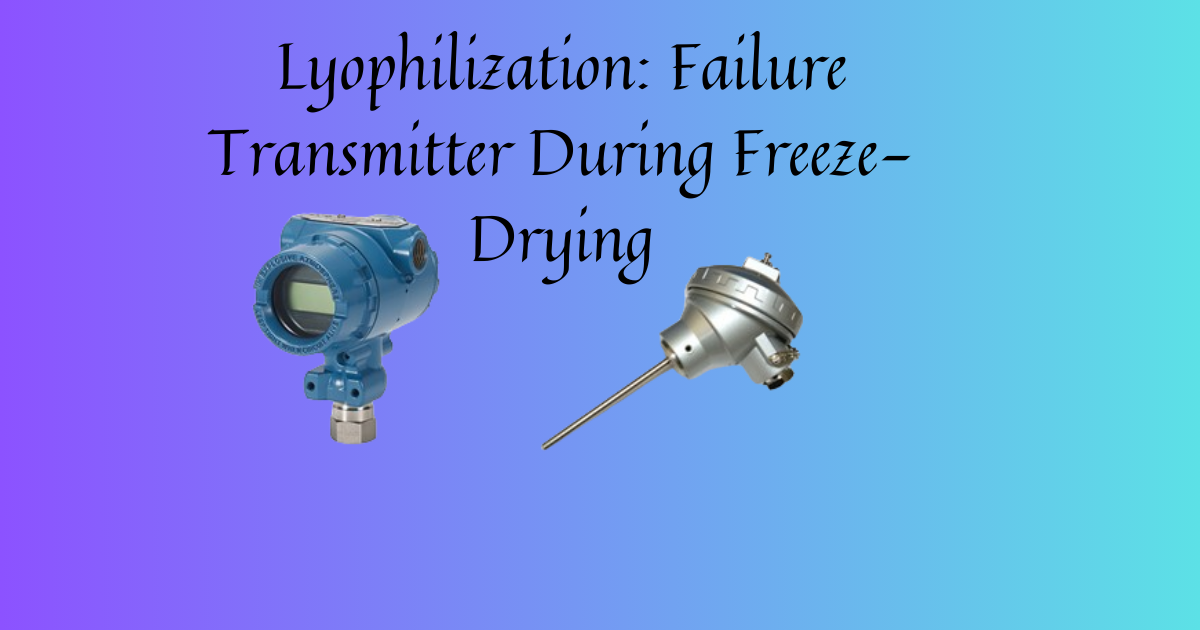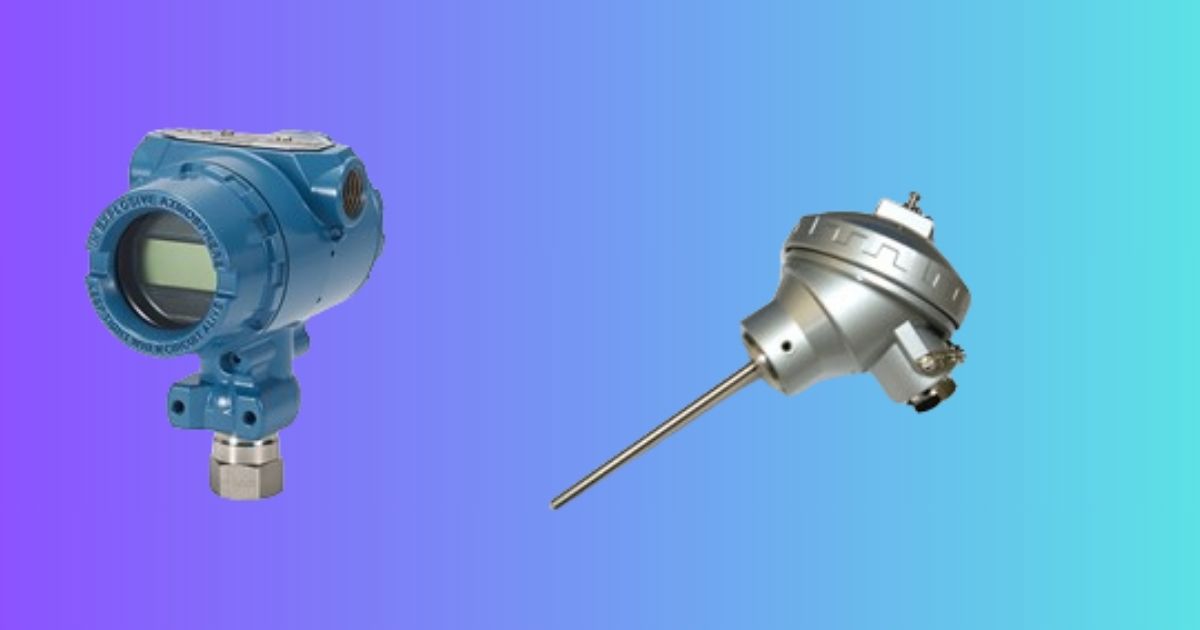This article explores the common causes and impacts of Failure Transmitter During Freeze-Drying process, focusing on the temperature, pressure, position, flow, and conductivity of transmitters. It provides detailed insights into the diagnostic tools used to identify these failures and offers preventive measures to ensure a smooth and efficient freeze-drying process. Learn how to mitigate risks, maintain product quality, and minimize downtime with practical solutions and expert advice.
What is a transmitter?
A transmitter is a device used to convert physical measurements, such as temperature, pressure, or flow, into an electrical signal that can be transmitted to a control system for monitoring and control purposes. It plays a crucial role in ensuring accurate and real-time data collection in various industrial processes.
Critical Components in Freeze-Drying
Role of Temperature Transmitters
Temperature transmitters are essential in maintaining the precise temperatures required during the freeze-drying process. They provide real-time data on the temperature of the product and the chamber, ensuring that the sublimation process occurs efficiently.
Role of Pressure Transmitters
Pressure transmitters measure the vacuum levels in the freeze-drying chamber. Maintaining the correct pressure is crucial for the sublimation process, as it allows the frozen water to transition directly into vapor.
Role of Position Transmitters
Position transmitters help monitor the position of various mechanical components in the freeze-drying system. For example, they can track the position of shelves or trays within the chamber, ensuring that the product is correctly positioned for even drying.
Role of Flow Meters
Flow meters are used to measure the flow of gases or liquids within the freeze-drying system. Accurate flow measurement is essential for maintaining the correct environment within the chamber, which directly affects the efficiency of the freeze-drying process.
Role of Conductivity Transmitters
Conductivity transmitters measure the conductivity of fluids within the system, such as the coolant in the refrigeration system. This measurement is crucial for ensuring that the coolant is functioning correctly or failure cooling system and that the system maintains the required low temperatures.
Common Failures in Lyophilization Transmitters
Failure temperature element:
Temperature transmitter failures are among the most critical issues in lyophilization. These failures can occur when the measuring signal falls outside the expected range of 4 to 20 mA. When this happens, the system cannot accurately monitor the temperature, potentially leading to incomplete or uneven drying.
The temperature transmitter with RTD input provides a measuring signal of 4 to 20 mA. This failure is reported when the measuring signal is not between the lower and upper limits. These are individual alarms for each temperature transmitter with RTD.
The causes of this failure could be:
- The measuring loop of the converter is interrupted.
- The measuring loop for the RTD has been interrupted.
- There is a short-circuit in the meas in the RTD itself.
- There are contact resistances at the contact points of the wire connections.
- The analog input boards of the PLC or field bus stations are
Failure of the pressure transmitter:
Pressure transmitter failures occur when the pressure signal does not fall within the specified limits. Such failures can lead to incorrect vacuum levels, causing the sublimation process to be less efficient or even to fail entirely, compromising the quality of the final product
The pressure transmitter provides a measuring signal of 4–20 mA. This failure is reported when the measuring signal is not between the lower and upper limitss.
The causes of this failure could be:
- The measuring transducer is
- The measuring loop has been interrupted
Failure Position element
Position transmitter failures happen when the system cannot accurately determine the environment in the freeze-drying chamber. Affecting the efficiency of the sublimation process and potentially leading to incomplete drying stage of primary and secondry drying or product degradation.
The measuring transmitter corresponding to position sensor gives a measuring signal of 4 to 20 mA. This failure is reported when the measuring signal is not between the lower and upper limits.
The causes of this failure could be:
- The position sensor or measuring transmitter,
- The measuring circuit has been interrupted.
Failure Flow meter
Flow meter failures can arise from blockages in the flow path, sensor degradation, or electronic faults in the transmitter. Such issues result in inaccurate flow measurements, which can disrupt the controlled environment needed for efficient freeze-drying
The measuring transmitter corresponding to flow meter gives a measuring signal of 4 to 20 mA. This failure is reported when the measuring signal is not between the lower and upper limits.
The causes of this failure could be:
- The flow meter or the measuring transmitter is
- The measuring circuit has been interrupted
Failure conductivity transmitter
Conductivity transmitter failures occur when the signal from the sensor is outside the expected range, often due to a defective sensor or an interrupted measuring circuit. Such failures can lead to improper cooling. As the coolant may not be maintained at the correct conductivity level, risking inadequate temperature control and, consequently, product spoilage.
The measuring transmitter corresponding to the conductivity sensor gives a measuring signal of 4 to 20 mA. This failure is reported when the measuring signal is not between the lower and upper limits.
The causes of this failure could be:
- The conductivity sensor or the measuring transmitter is defective.
- The measuring circuit has been interrupted
Impact of Transmitter Failures on Freeze-Drying Process
Quality Degradation of the Final Product
Transmitter failures during lyophilization can lead to significant quality issues in the final product. For instance, inaccurate temperature or pressure readings can result in incomplete drying, leading to residual moisture in the product. This moisture can cause microbial growth, reducing the product’s shelf life and efficacy.
Increased Downtime and Maintenance Costs
Failures in critical transmitters can cause unplanned downtime, as the freeze-drying process must be halted to address the issue. This downtime not only delays production but also increases maintenance costs, as repairs and recalibrations are often necessary to restore the system to full functionality.
Potential Safety Hazards
In some cases, transmitter failures can lead to safety hazards. For example, incorrect pressure readings could cause the chamber to operate outside safe limits, potentially leading to equipment damage or even explosions in extreme cases. Ensuring that all transmitters are functioning correctly is vital for maintaining a safe operating environment.
Diagnostic Tools for Identifying Transmitter Failures
Using RTD Input for Temperature Transmitter Diagnostics
One of the most effective ways to diagnose temperature transmitter failures is by using Resistance Temperature Detectors (RTD) inputs. RTDs provide highly accurate temperature readings, allowing for precise diagnostics. Regularly checking RTD inputs can help identify issues early, such as signal drift or circuit interruptions.
Diagnostic Techniques for Pressure Transmitters
Pressure transmitters can be diagnosed using a combination of manual inspections and automated diagnostic tools. Regular calibration checks and using diagnostic software that monitors pressure readings in real-time can help detect early signs of failure, such as signal deviations or transducer malfunctions.
Position Sensor Diagnostics
To diagnose position sensor failures, it is essential to perform regular mechanical inspections and alignments. Automated systems can also track the position of components in real time, providing alerts if the position readings fall outside expected parameters, indicating a potential sensor issue.
Flow Meter Diagnostic Tools
Advanced diagnostic tools can monitor flow rates continuously, providing real-time data and alerting operators to any discrepancies that could indicate a failure.
Conductivity Transmitter Diagnostics
Conductivity transmitter failures can be diagnosed by regularly checking the sensor for fouling or corrosion and using diagnostic software that tracks conductivity levels over time. Sudden changes in conductivity readings can indicate a sensor issue, prompting further investigation.
Conclusion of failure of the transmitter
Transmitter failures in lyophilization processes can have severe consequences, from compromising product quality to increasing downtime and posing safety risks. Understanding the common causes of these failures and implementing preventive measures, such as regular maintenance, redundancy, and advanced diagnostics, is essential for ensuring a reliable freeze-drying process. By staying vigilant and proactive, operators can minimize the risk of transmitter failures and maintain the high standards required in industries that rely on lyophilization.
FAQs of failure transmitter
What is the role of a temperature transmitter in lyophilization?
The temperature transmitter plays a crucial role in maintaining the precise temperatures needed during the freeze-drying process. It provides real-time data on the temperature of the product and chamber, ensuring that the sublimation process occurs efficiently.
How do pressure transmitter failures impact the freeze-drying process?
Pressure transmitter failures can lead to incorrect vacuum levels, causing the sublimation process to be less efficient or even fail, which compromises the quality of the final product.
What preventive measures can be taken to avoid position transmitter failures?
Regular mechanical inspections and alignment checks. And using real-time monitoring systems can help prevent position transmitter failures.
How often should flow meters be calibrated during lyophilization?
Flow meters should be calibrated regularly. The frequency depends on the specific process and equipment used. Regular calibration ensures accurate flow measurements, which are critical for maintaining the correct environment in the freeze-drying chamber.
What are the common signs of conductivity transmitter failure?
Common signs of conductivity transmitter failure include sudden changes in conductivity readings and erratic signal behavior (****). And inconsistent cooling performance, indicating potential sensor issues or circuit interruptions.

